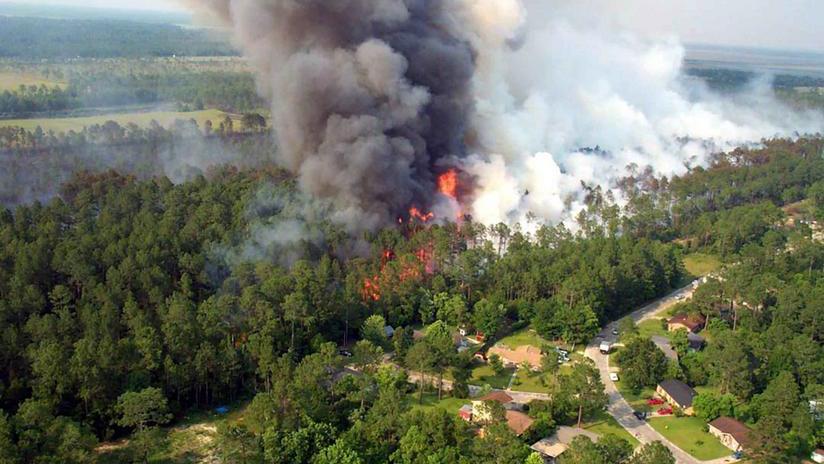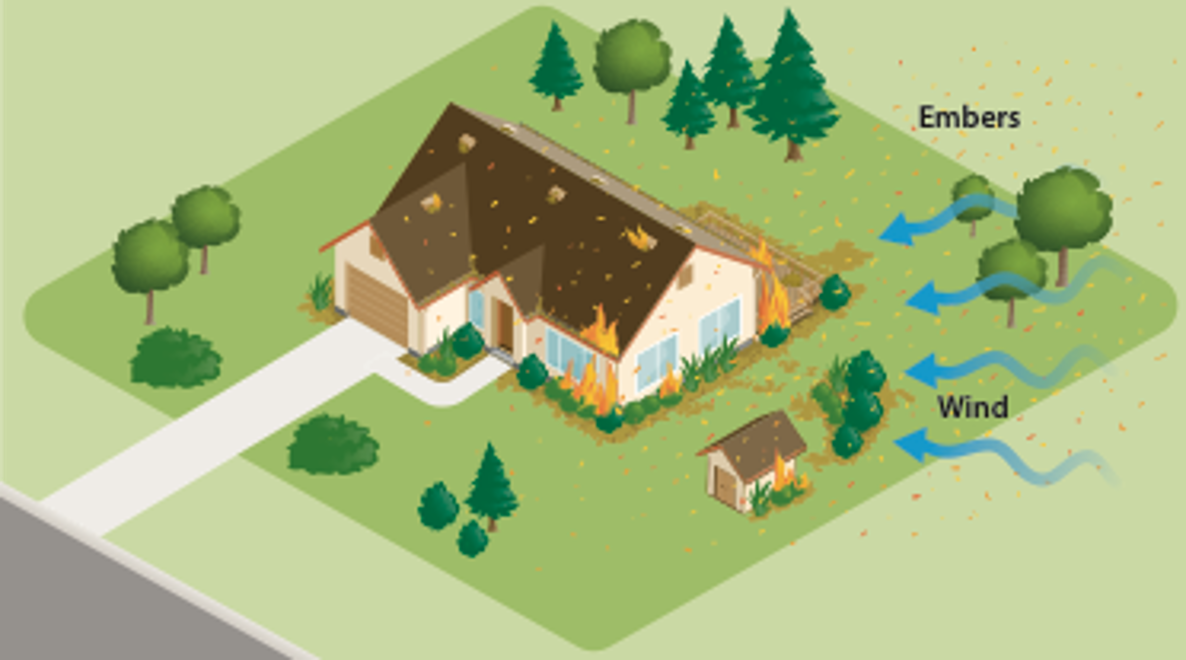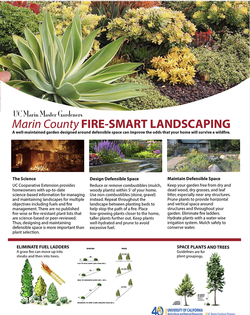How to Create a Fire-smart Landscape

Defensible space are areas intentionally planned and maintained to reduce fire danger and to allow firefighters ample room to address embers and spot fires before they grow. The two key factors in creating a fire-smart landscape are planning and maintenance.
Planning takes into account the distance combustible materials like plants, decks, and other common landscape items are located from your home and other built structures.
Maintenance is all about keeping your landscape well-groomed, hydrated, trimmed, and correctly mulched. The goal is to grow an Earth-friendly garden while increasing the odds that your garden will survive a nearby wildfire.
> Watch: short video explains fire-smart landscaping
> Cheat sheet: critical fire-smart steps
> Why fire-smart landscaping is critical NOW
> Planning: 3 zones of defensible space
> Maintenance: stay on garden chores to boost fire resistance
> Plant placement & spacing in a fire-smart landscape
> Managing common garden fire hazards
> Choosing plants for a fire-smart landscape
> Fighting fire on a slope
> Tips: monthly fire-smart reminders
> Print it: quick reference page to post at home

Cheat Sheet: Critical Fire-smart Steps
Step 1: Know your evacuation route.
Keep it cleared of vegetation so fire fighters can gain access in the event of an emergency.
Step 2: Start at the house and work out
Contact your local fire agency for advice on how to harden your home.
Step 3: Evaluate the 5 foot perimeter surrounding your house.
What will catch on fire? Look for small things like leaves in corners or near the siding of the house. Write down what you need to do to eliminate combustible materials closest to your house. Be aware of prevailing winds, slopes and plantings near windows and doors. Plants should be low-growing, non-woody, and under 18 inches tall. They should also be sparsely planted and well-hydrated.
Step 4: Develop a plan.
Use the 3 zones of defensible space as well as plant spacing and maintenance guidelines.
Step 5: Implement the plan.
Get help and necessary equipment and materials. Aim to implement your plan before conditions become dry in summer. Remove all material and debris. Chip or dispose of them through your local waste site. Learn more about upcoming chipper days for your community here.
Step 6: Monitor and maintain.
Stay on top of maintenance. Keep garden pruned, watered, and free of excess debris. Keep common fire hazards away from the house. Learn about fire-smart choices for mulch.
Step 7: Work with neighbors.
Burning homes are the biggest risk to surrounding homes. Aim for community-wide defensible space. If expense is a concern, start small and seek help with labor and materials.
Why Fire-smart Landscaping is Critical NOW
Many parts of Marin County are at risk for wildfire. This is especially true in the wildland-urban interface (WUI), where urban and suburban development meets undeveloped areas. These are areas in mountains, foothills, and canyons where adjacency to vegetated areas, difficulty of access, and weather patterns pose greater risk of wildfire.
California wildfires have become more frequent, intense, and destructive. This is due to more wildland vegetation, more development in the WUI, and the pervasive effects of climate change.

Embers are the most significant cause of home ignition in wildfires. Embers are small pieces of burning material that can travel more than a mile from a wildfire. They can create spot fires when they land on combustible materials such as dry leaves in roof gutters.
A quick list of fire-smart landscaping tips (and in Spanish):
Watch our video:
Fire-smart landscaping tips in Spanish:

